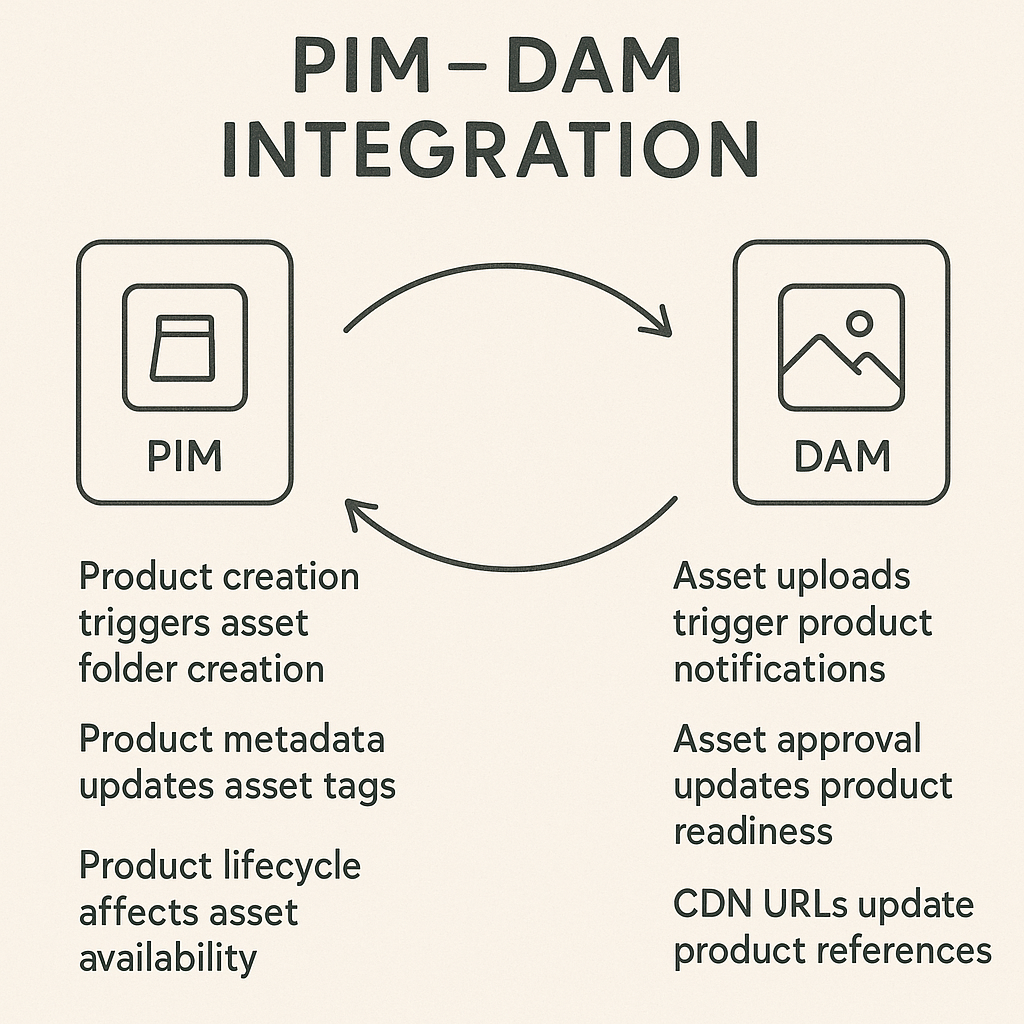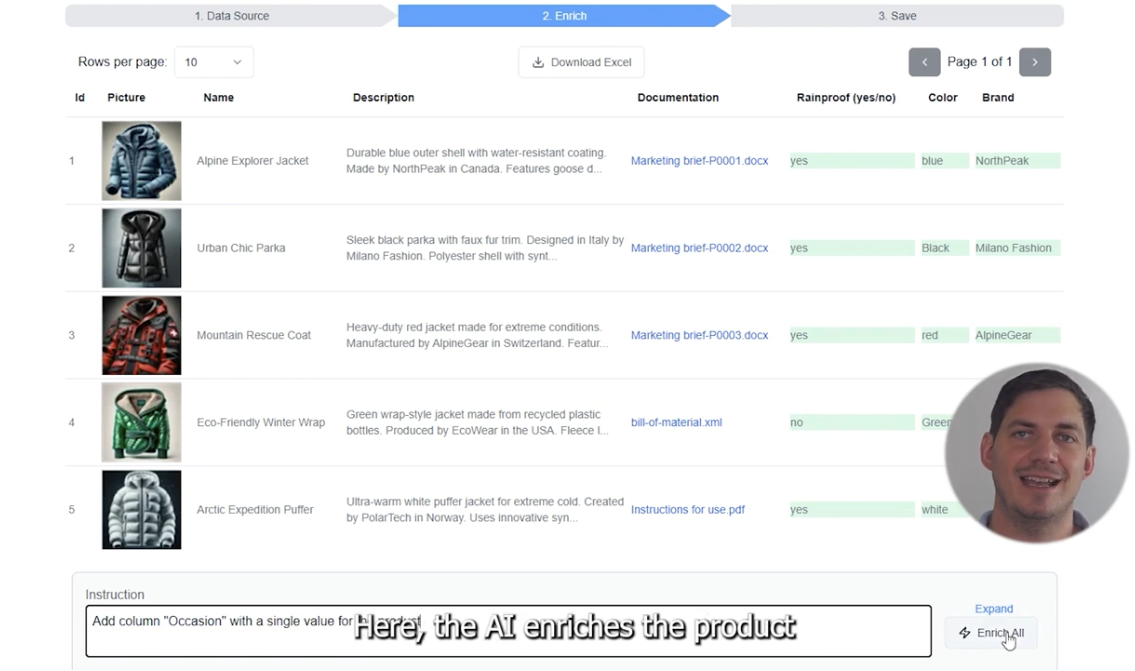Platform Overview
Perfion is a Danish Product Information Management (PIM) system founded in 1999, headquartered in Aalborg, Denmark. The platform positions itself as a '100% standard' PIM solution with particular strength in Microsoft Dynamics integration, offering native out-of-the-box connectivity to Dynamics AX, NAV, D365BC, and D365FO.
Perfion's architecture centers around a grid-based editing interface reminiscent of Microsoft Excel, making it familiar to business users. The system emphasizes rapid implementation and no-code configuration, targeting mid-to-large enterprises requiring complex product data management across multiple channels.
Key Facts:
- Founded: 1999
- Headquarters: Aalborg, Denmark
- Approach: PIM with Excel-like grid interface
- Strength: Native Microsoft Dynamics integration
- Deployment: Both cloud SaaS and on-premise
- Latest Version: 5.0 (major UI overhaul completed)
Microsoft Dynamics Integration
Native ERP Integration
Perfion's standout feature is its 100% integrated approach to Microsoft Dynamics environments. Unlike many PIM systems that require custom development for ERP connectivity, Perfion provides out-of-the-box integration modules for:
- Dynamics AX: Full bidirectional sync with transactional data
- Dynamics NAV: Compatible with both Role Tailored and Classic clients
- Dynamics 365 Business Central: Native integration maintaining ERP simplicity
- Dynamics 365 Finance & Operations: Seamless product lifecycle management
Architecture Benefits
The integration keeps ERP systems streamlined by storing only transactional data in Dynamics while managing all descriptive product information in Perfion. This approach reduces ERP customizations, improves performance, and simplifies version upgrades.
Real-Time Data Access
Users can work with live ERP data (prices, inventory) directly within the Perfion interface, eliminating the need to switch between systems. The Release2ERP module allows controlled product releases from PIM to ERP when predefined criteria are met.
Perfion PIM: Strengths and Limitations
Based on experience with Perfion version 5 (not current version)
✅ Strengths
- Excel-like Grid Editor: Familiar interface that allows efficient bulk editing of product data in a spreadsheet-style format
- Rich Text Editor: Built-in WYSIWYG editor for creating detailed product descriptions and marketing content
- Product Sheet Generation: Automated generation of product datasheets and catalogs using Perfion's layout tool templates
- Native Dynamics Integration: Out-of-the-box integration with Microsoft Dynamics AX, NAV, and D365 without custom development
- Advanced Search & Filters: Configurable search functionality with saved searches, though lacks free-text searching capabilities
⚠️ Limitations
- API Architecture Differences: Uses XML-based web services rather than modern REST APIs, which may require different integration approaches
- Different Feature Approach: Some features like field history and advanced workflow management work differently than in other PIM systems
- Implementation Considerations: May require specific configuration approaches and development practices for complex implementations
- Different Integration Approach: Uses proprietary XML format and requires custom monitoring solutions rather than modern API patterns
- Workflow Configuration Approach: Task and workflow management requires custom configuration rather than built-in templates
- Windows Client Dependency: Advanced features like InDesign XML export require Windows client, though Mac access possible via Parallels
List of data types available in Perfion for defining features.
| Common Name | Vendor Name | Description |
|---|---|---|
Text | String, Text | Fields for single-line (String) and multi-line (Text) content. |
Number | Number | Numeric fields for quantitative data. |
Date | Date | Fields for date and time values. |
Image | Image | Specific fields for image assets. |
File | File | Fields for general file assets like documents. |
Table | Table | Fields for structured, tabular data. |
Query | Query | Special field type that holds a Perfion Query as its value. |
Technical Analysis & Implementation Insights
API Limitations & Integration Challenges
While Perfion markets itself as having an 'open API,' the reality is more nuanced. The web service accepts Perfion Queries in XML format rather than modern REST endpoints, which may present different integration approaches compared to other PIM systems. Key API limitations include:
- No NuGet package availability for .NET integration
- Requires custom Windows scheduled tasks for data synchronization
- Limited to pull-only operations (no event-driven architecture)
- Output XML format changes when data model changes, requiring recipient system updates
- Outbound filters cannot be modified through the user interface
Data Modeling & Configuration
Perfion's data modeling approach is straightforward but lacks some sophisticated features found in other PIM systems. The absence of field history tracking means audit trails must be custom-built. User type fields are not supported, limiting data access control granularity.
Workflow & Task Management
One of Perfion's most significant limitations is the lack of native workflow capabilities. While tasks can be modeled within the system, implementing meaningful workflow automation requires:
- Extensive custom configuration
- Custom development for business logic
- Manual setup of approval processes
- Third-party tools for advanced workflow requirements
Version 5 Improvements
Perfion 5.0 introduced significant UI improvements, aligning the web client with the Windows client experience. Key enhancements include:
- Unified interface design across platforms
- Improved grid layouts with drag-and-drop functionality
- Enhanced language support with per-field editing
- Read-only feature protection to prevent accidental changes
- Role-based access to feature data for content creators
API Search Example: Find Product by Attribute
Example of the XML-based Perfion Query used to search for a product by a specific feature value like an SKU.
<!-- Example Perfion Query to search for a product by SKU -->
<perfion>
<query>
<select>
<feature>Name</feature>
<feature>Description</feature>
</select>
<from>
Product
</from>
<where>
<condition>
<feature>SKU</feature>
<value>12345</value>
</condition>
</where>
</query>
</perfion>Strategic considerations for Perfion implementation including Microsoft Dynamics integration, data architecture, and alternative approaches
Grid Editor: Perfion's Standout Feature
Despite its limitations, Perfion's grid editor is a strong feature in their offering. The Excel-like interface provides good usability for bulk product data management. Note that the version tested was the Windows client, which offers better performance as it runs closer to the database with more in-memory processing.
Grid Capabilities
- Bulk Editing: Efficient mass updates across multiple products
- Filtering & Sorting: Advanced data manipulation capabilities
- Language Management: Multi-language editing within the same view
- Real-time Updates: Changes reflect immediately across all views
- Customizable Views: Tailored displays for different user roles
Competitive Positioning
While modern API-enabled PIM systems can achieve similar functionality through headless implementations, Perfion's native grid experience can be compelling for organizations prioritizing user-friendly data entry interfaces over technical flexibility.
"The grid view is really good, and is matched by eg. Inriver's dynamic grid. Other API-enabled PIM systems can have the same feature through a headless layer if it is not natively supported."
Pricing & Evaluation Process
Getting Started with Perfion
Perfion appears to use a subscription-based model tailored to individual organizational needs. Rather than published standard pricing, the vendor likely provides custom quotations based on your specific requirements including number of users, data volume, and integration complexity.
We strongly recommend booking a comprehensive demo with Perfion to:
- Understand how the platform fits your specific use case
- Explore integration options for your existing systems
- Discuss pricing based on your actual requirements
- See live demonstrations of key features like the grid editor
- Evaluate the Microsoft Dynamics integration capabilities
Target Fit Assessment
Perfion typically works well for:
- Organizations using Microsoft Dynamics environments
- Companies seeking rapid PIM implementation
- Teams prioritizing user-friendly interfaces
- Businesses with straightforward product data requirements
For the most accurate assessment of fit, schedule a technical consultation with the Perfion team to discuss your specific requirements and see live demonstrations.
Explore other PIM systems and implementation strategies to make informed decisions
Final Verdict
Important Note: This analysis is based on experience with Perfion version 5, which is not the current version. Perfion has since released newer versions (including 5.6 as of 2025) that may address some of the limitations mentioned here.
Perfion PIM served a specific segment of the product information management market at the time, offering particular strengths in Microsoft Dynamics integration and user-friendly grid-based data management.
For organizations invested in the Microsoft ecosystem seeking straightforward PIM implementation, Perfion appeared to provide notable advantages. The Excel-like grid editor offered good usability for bulk data management, and the native ERP integration could significantly reduce implementation complexity.
However, organizations with complex workflow automation needs, extensive API integration requirements, or advanced customization needs should carefully evaluate whether Perfion's approach aligns with their technical architecture and future plans.
Our Recommendation
Before making any PIM decision, we strongly recommend:
- 📅 Book a comprehensive demo with Perfion to see the current platform in action
- 🔍 Request technical deep-dives on your specific integration requirements
- ⚖️ Compare with other PIM vendors to understand the market landscape
- 🎯 Focus on your actual use cases rather than feature checklists
- 👥 Involve your technical team in evaluation discussions
Perfion may be an excellent fit for your organization, but only a thorough evaluation including live demonstrations and technical discussions will determine the best path forward.
Contact Perfion directly to schedule a personalized demo and discuss your specific requirements with their team.




